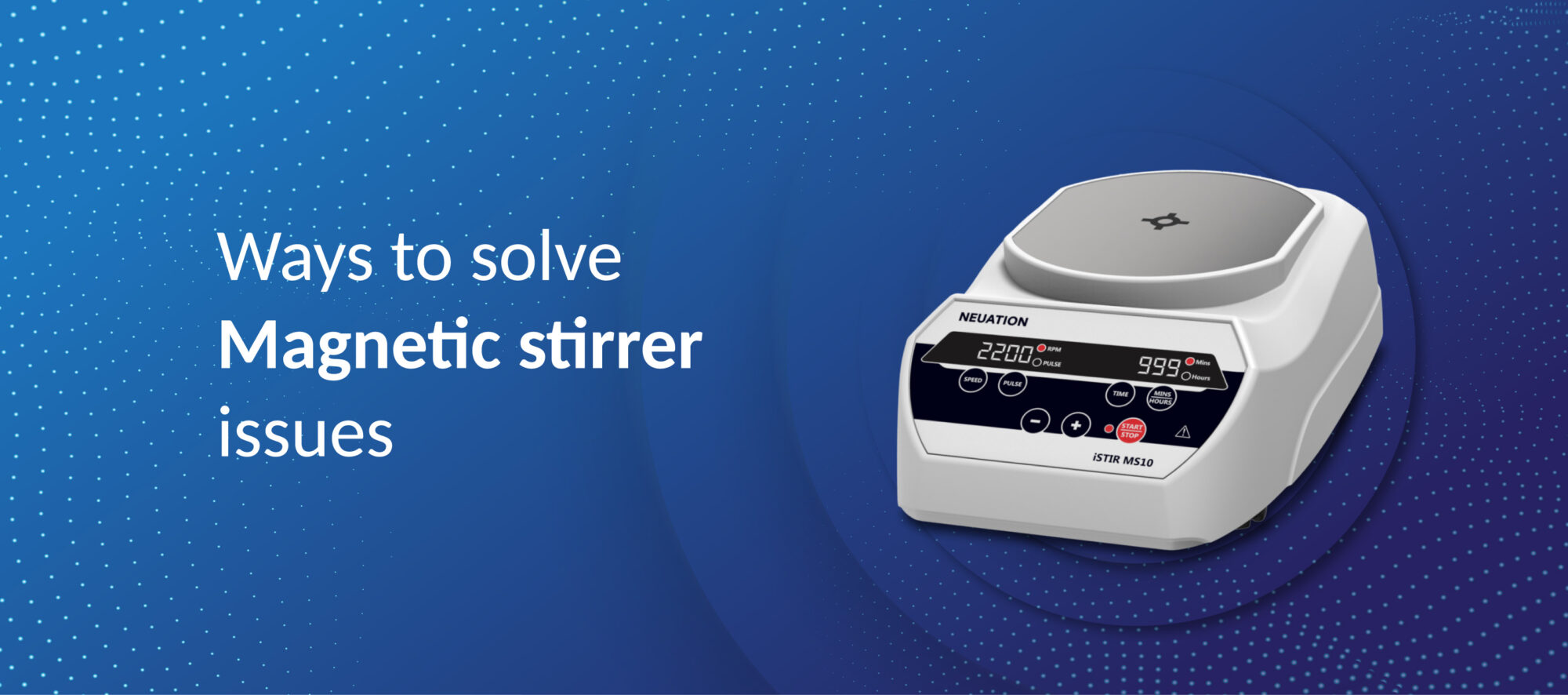Magnetic stirrers are commonly found in laboratories and are useful for various mixing and dispersion tasks. However, they may also cause problems. This blog discusses solutions to potential issues that emerge when using a magnetic stirrer.
There are several common issues that may arise when using a magnetic stirrer, including Motor failure, Stir bar failure, Speed control issues, Power issues or Noise.
There are various reasons that may contribute to insufficient mixing. Let’s look at some effective ways to solve magnetic stirrer issues throughout this blog:
Increase the Speed Slowly: One reason for uncoupling is increasing the speed too quickly, which can result in spinout where the bar loses its connection with the magnet and moves away from its central position in the vessel. The bar could stop spinning completely or move in an unpredictable way until the speed is lowered. The best way to handle this issue is to gradually increase the speed. Not only does this prevent the stir bar from spinning out of control, but it also reduces the chance of your sample splashing.
Use the Correct Stir Bar: Different stir bars are designed for various purposes and using the incorrect one can cause issues such as uncoupling and inadequate mixing. For instance, a triangle shaped stir bar generates a lot of turbulence and can aid in dissolution or prevent sedimentation by acting as a scraper. Certain shapes of stir bars are better suited for specific types of containers and can prevent the bar from becoming dislodged or stuck. For instance, spherical stir bars are commonly used in small-volume samples in tubes and vials. Slide round bars feature a pivot ring that encircles the center of the bar.
This design allows the bar to maintain a desirable position in a vessel that has a curved or uneven bottom. The ring minimizes vibrations and wear, and reduces friction between the bar and the vessel. When selecting a stir bar, not only is the shape important, but also the size. The size of the magnet inside the stirrer, also known as the drive magnet, is crucial. To prevent spinout, the stir bar should be approximately the same length as the drive magnet. For longer magnets, it may be necessary to decrease the maximum speed as more drag is created without a corresponding increase in magnetic coupling.
Reconsider the Vessels: Consider changing your vessel instead of the stir bar you're currently using. A flat-bottomed vessel is better suited for regular round stir bars. Arched-bottom vessels are harder to work with, as it's difficult to position the stir bar correctly, and the distance between the stir bar and the drive magnet is decreased, resulting in poor coupling. To improve this, use a bone stir bar or a vessel with a thin bottom. Ensure that the vessel being used is placed in the center of the stirrer plate for proper coupling and to avoid the bar from hitting the sides of the vessel. When working with vessels that are not in contact with the plate, such as test tubes or round-bottomed flasks, position them as close to the stirrer plate as possible.
Use a Unit with a Stronger Magnet: The capabilities of a magnetic stirrer are limited by the size and strength of its internal drive magnet. If the magnet is small and weak, it may struggle to mix large volumes or viscous substances, potentially causing the bar to become stuck or resulting in insufficient mixing. The maximum volume a stirrer can handle is typically specified by the manufacturer.
Consider Using an Overhead Stirrer: Magnetic stirrers may not be the best option for all mixing needs. If you have evaluated the factors mentioned and are still encountering problems, an overhead stirrer may be a better fit for your project. Some key factors to consider between magnetic and overhead stirrers include the volume and thickness of the substances being mixed. For instance, if the substance is too thick, the magnetic connection between the bar and the drive magnet may not be strong enough to overcome the thick material's resistance.
Conclusion
The primary use of a magnetic stirrer or hot plate with a magnetic stirrer is to conduct biological and chemical experiments by mixing two components. It is equally suitable for solids or liquid samples to obtain a consistent liquid mixture. As mentioned in this blog, there are several ways to adopt for effective mixing and dispersing. When you encounter issues in your experiments, small adjustments can go a long way. It can be helpful to reread the manufacturer's instructions if you continue to have issues with the system. Proper use is always recommended and, when in doubt, reach out to us for professional assistance.
Hope this article will help you in choosing the right product which custom fits your application.
To know more about our Magnetic stirrers visit: https://neuation.com/product-category/stirrers/magnetic-stirrer/ or contact us at mkt@accumaximum.com
Original source: https://neuation.com/ways-to-solve-magnetic-stirrer-issues/







